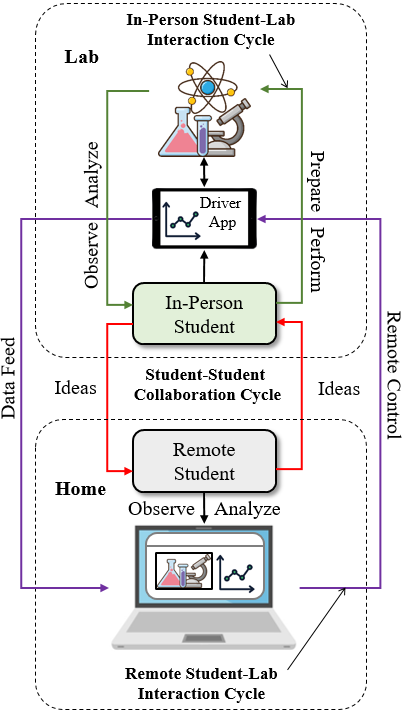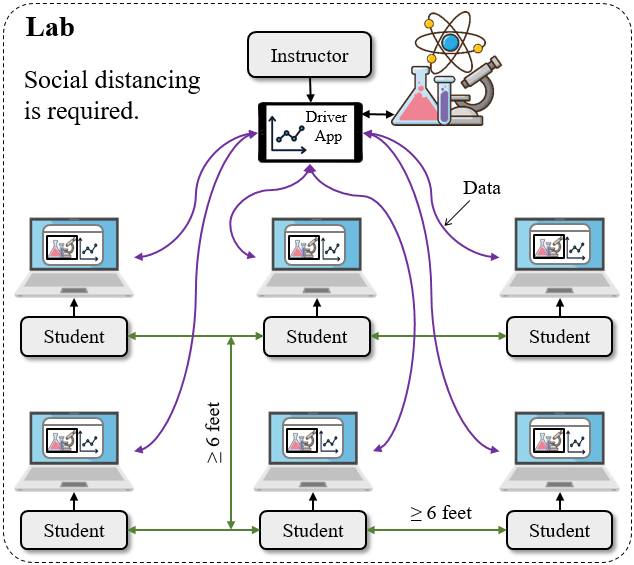Three Ways of Using Telelab
By Charles Xie ✉
The ability of Telelab to support users to conduct their own experiments and distribute real-time data to others engenders three types of applications described as follows. In all the applications, the experimental data are presented to all the stakeholders in the forms of interactive visualizations such that they can rapidly explore the data and recognize the patterns.
1. Remote Inquiry in a Completely Online Class
The learning and teaching model of remote inquiry consists three interlocked cycles of interactions — student-lab, student-teacher, and student-student — that mimic actual experiences in a science lab where students are physically present to participate in hands-on experiments, often in a collaborative fashion. In the student-lab cycle, students observe a remote experiment and analyze incoming data on their own computers. If the experiment is being conducted in real time, they can even remotely control it and obtain new data as a result of their own interventions. In the student-teacher cycle, students receive instruction from the teacher about remotely analyzing and controlling an experiment, but they can also propose their own ideas to be tested in the teacher’s next step of experimentation. In the student-student cycle, students can discuss the experimental results with their peers through text/audio/video chats.

An illustration of the instructional model of remote inquiry
2. Collaborative Inquiry in a Hybrid Class
Hybrid learning is an educational model where teachers instruct both in-person and remote students at the same time. As many schools allow students to choose between learning from home and learning at school, hybrid classes are now commonplace. Under a hybrid circumstance, each student in the lab can collaborate with a remote partner to conduct an experiment in tandem. Telelab provides a handy tool to streamline hybrid learning in the lab as the data are automatically transmitted behind the scenes to the remote partners and visualized as intuitive images or graphs on their computers. Hence, students in a hybrid group can all concentrate on observing the unfolding of an experiment and making sense of the incoming data. Such a joint investigation may inspire the group to raise even more what-if questions. They can debate about the relevance and testability of these questions and then delegate the student in the lab to conduct further experiments to pursue some of them, thus starting a new iteration of collaborative inquiry.

An illustration of the instructional model of collaborative inquiry
3. Collective Inquiry in a Completely In-Person Class
Telelab can also be used when the teacher and all the students are in the same room. In this case, the technology can provide a way for students to observe and analyze an ongoing experiment performed by the teacher without leaving the desks designated to them and violating social distancing rules. Compared with projecting the results to a large screen in front of the entire class, the technology in this case can be imagined as a system of “distributed smartboards” — each student has her/his own screen for observing and interacting with the experiment while it is being conducted.

An illustration of the instructional model of collective inquiry
